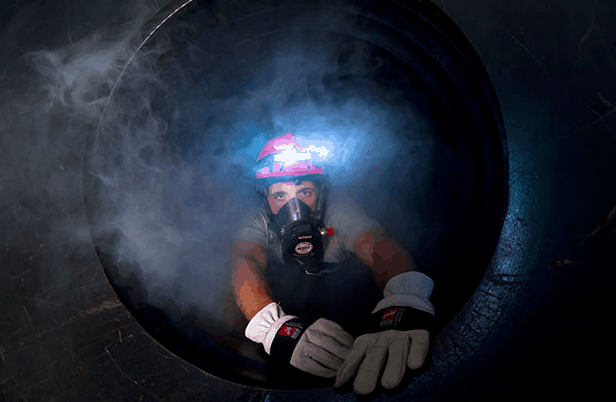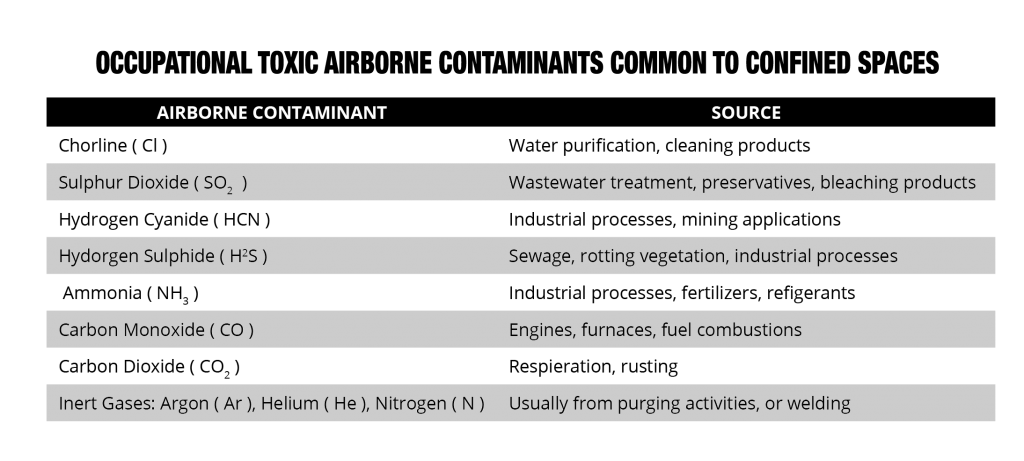
Invisible Hazards in Confined Spaces
There are many elements in a confined space or hazardous location that affect the atmosphere’s safety. To maintain a healthy environment, it is important to recognize how these components can potentially be harmful.
Sufficient oxygen is extremely important to keep any atmosphere healthy — it’s one of the first elements on the periodic table we learn as kids in our grade school science classes. When other natural gasses enter a confined space when there has been a depletion of oxygen, then that is when the real trouble happens.
Hazardous atmospheres in confined spaces transpire when there is a deficiency of oxygen. When the oxygen has been replaced by non-toxic gasses, like nitrogen or carbon dioxide, asphyxiation can occur.

In other cases, when working in a confined space, workers are susceptible to inhaling airborne contaminants — toxic gases, vapors, fumes, and dust — which can lead to injury or death.
It’s also important to consider the different reactions that gasses have in different parts of the atmosphere. For example, hydrogen sulfide is heavier than air, therefore, it sinks; methane is lighter than air, so it rises. It is important to continually practice safety precautions, and to pay mind to checking the gas levels of the environment.
Dangerous combinations of natural gasses can create flammable atmospheric hazards, which can lead to fatal fires and explosions. It is important to have explosion-proof safety equipment to avoid adding fuel to the fire.
Even though you can’t always physically detect a potential atmospheric hazard, there are tools and safety precautions that always need to be applied in a confined space. The bottom line is that workers need to stay safe and healthy.
By Laura Canepa
